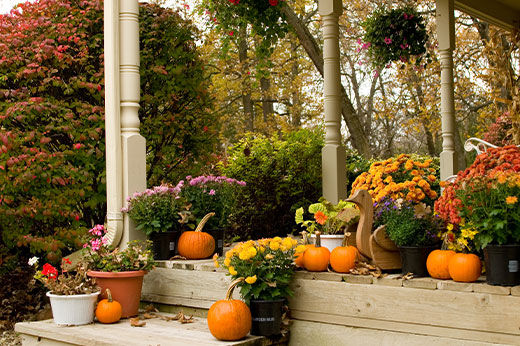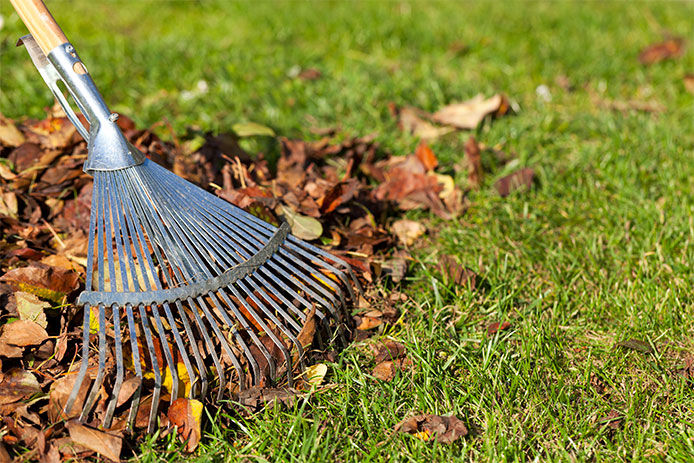|
How to Install Patio Pavers
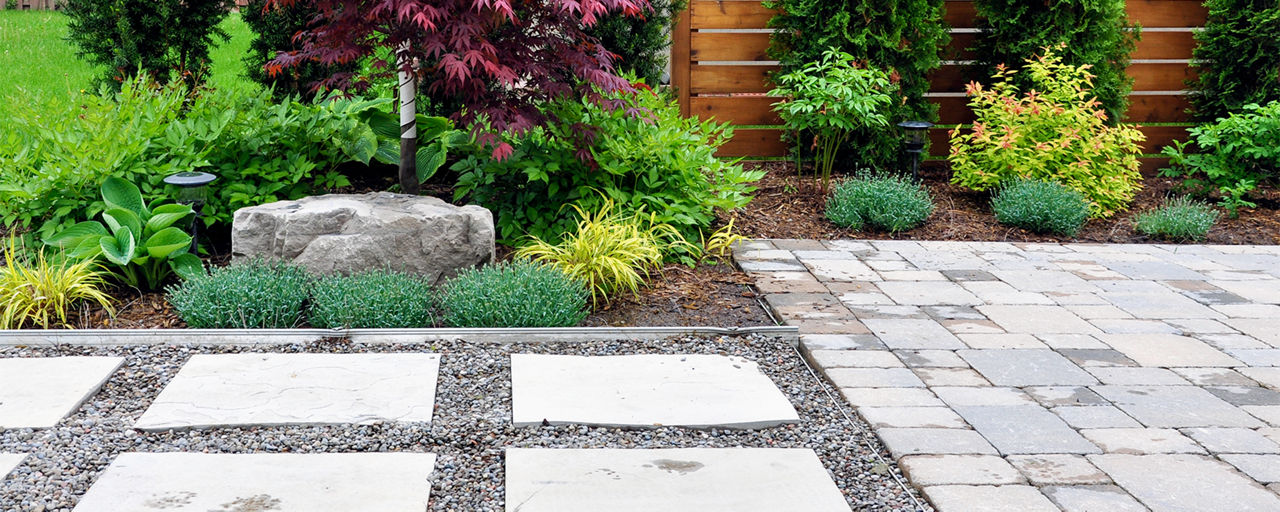
A beautiful outdoor patio can add value to your home and provide a quiet place to relax or socialize with family and friends. While there are many options for patio construction, patio pavers are a great choice, because they provide a polished aesthetic and can be installed as a DIY project. Once you have selected a paver type and gathered the materials, installation can be completed in under a week.
Selecting the Perfect Patio Pavers
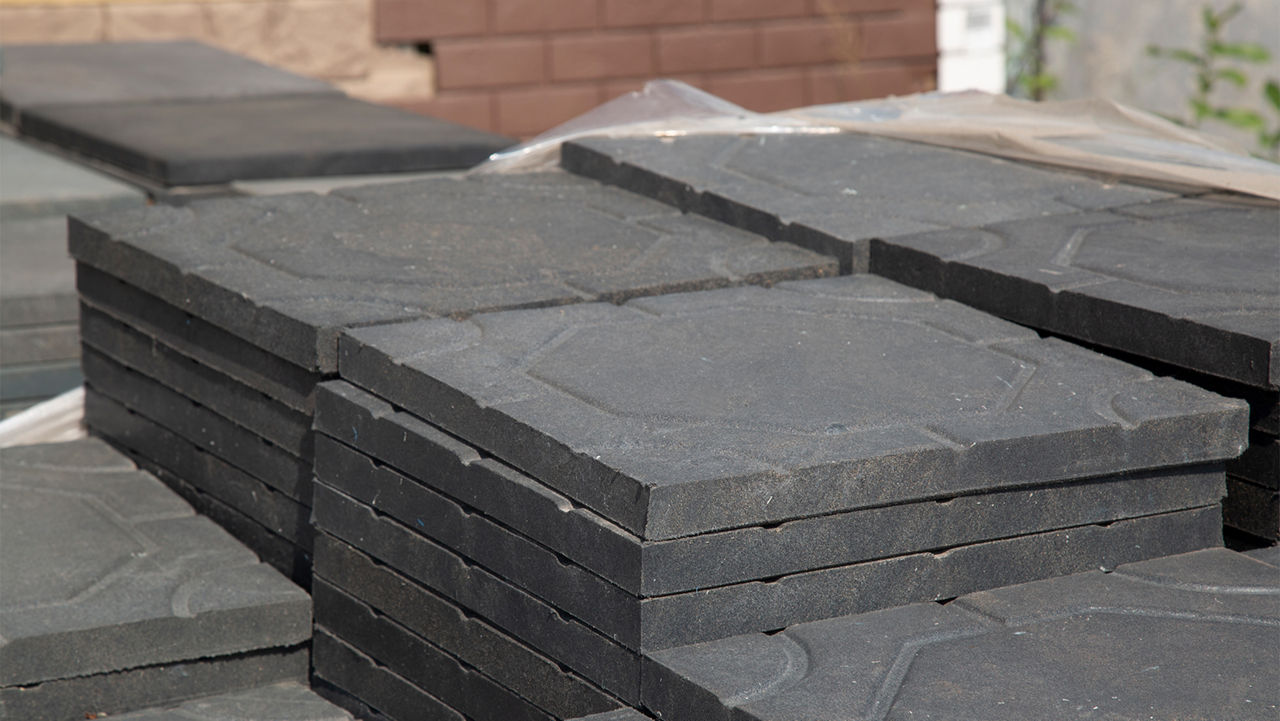
Paver patios appeal to homeowners for their durability, ease of maintenance, and weather resistance. If installed properly, a paver patio can last for many years.
To choose the best patio paver material for your application, it helps to take a few things into account. Consider the architectural style of your home. Some pavers lend themselves to a more traditional look while others are more transitional or contemporary. What is your budget for the project? Materials like natural stone tend to be more expensive than concrete or brick. Spend some time looking at photos of styles you like, and take notice of patios in your neighborhood that appeal to you.
The most common paver materials are brick, concrete, and natural stone.
- Brick pavers are made of clay and are designed to stand up to high foot traffic. They are stain-resistant, come in earth-toned colors, and provide a traditional look.
- Concrete pavers come in many colors and designs. Some are even stamped to give the appearance of multiple pieces within one paver. They are a great, cost-effective choice.
- Natural Stone is a broad category including stone such as flagstone, fieldstone, bluestone, cobblestone, travertine, and more. With some of these natural stones, the overall pattern of the patio tends to be more free-form, as the stones vary in size and shape. Natural stone is the most costly material for a patio but worth it if your budget allows it.
Materials Needed to Lay Pavers
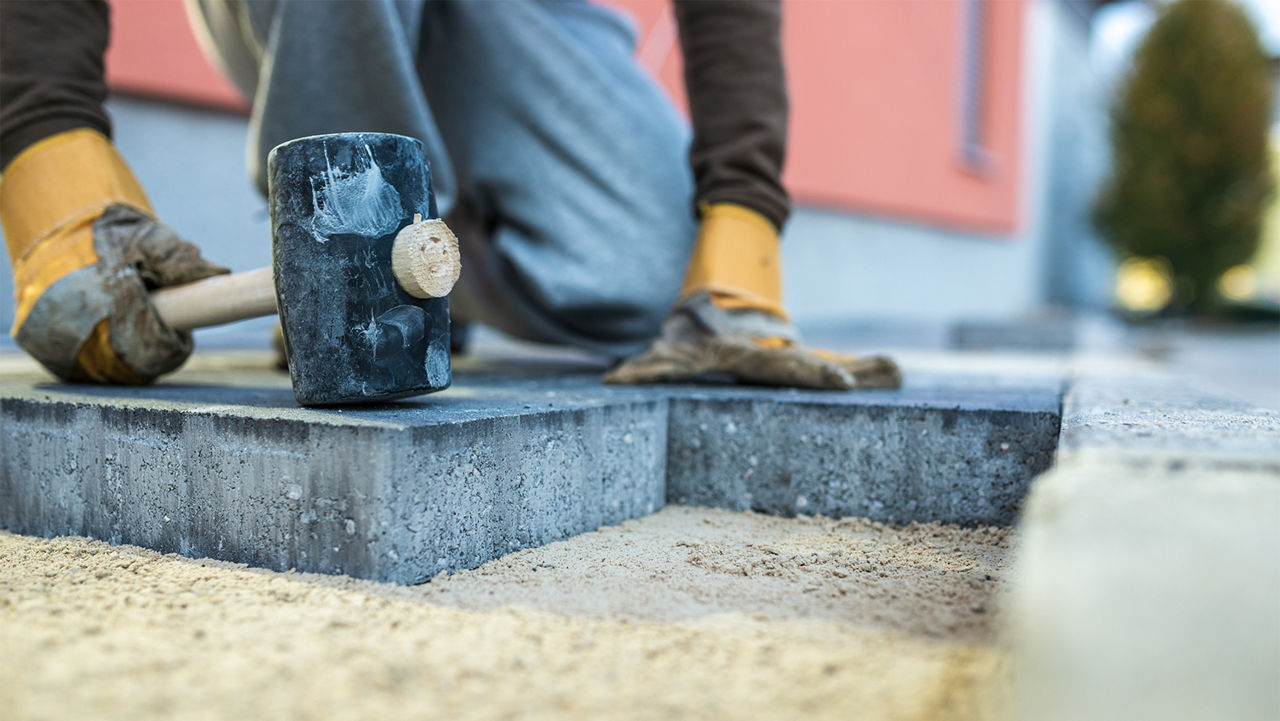
If you choose to install the patio pavers yourself, you will need to gather the following tools and materials:
How to Lay Pavers
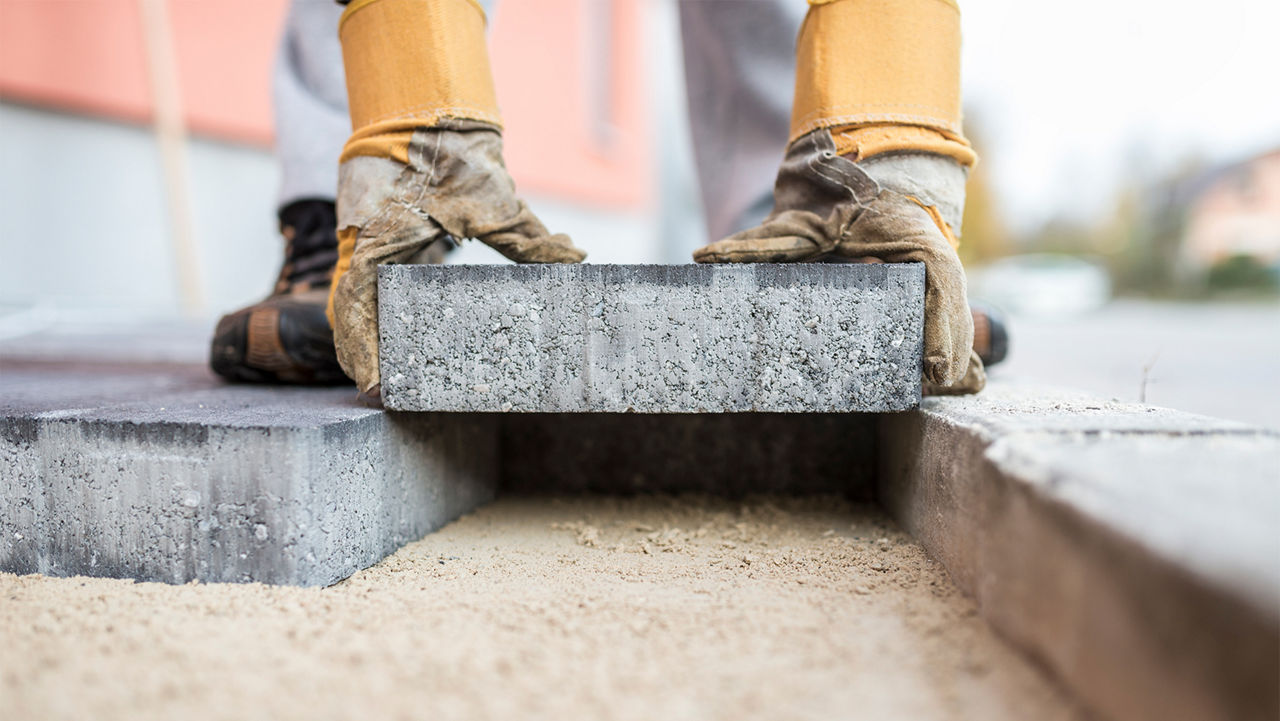
Make sure you are fully prepared before beginning work on the project.
- Call the utility company to mark the underground utilities so you can avoid them when digging.
- Order your materials.
- Measure the total square footage of the new patio.
- Calculate the number of pavers to fill the area based on individual paver size.
- Use an online calculator to determine the amount of gravel base (4-6” layer), sand (1” layer), and polymeric sand needed to cover the area.
- As a general rule, order approximately 10% more material than you think you will need to account for spillage, etc.
Now that you have all of your materials, you are ready to begin.
Measure and mark the area
Use a tape measure to place stakes around the perimeter of the new patio. Hammer the stakes into the ground, and use string to connect them, The string should be completely level all the way around.
Clear the area
Shovel the area to the depth you need for the base, sand, and pavers. Rake to clear the area of debris, and then use a tamper or plate compactor to ensure it is completely level. If the patio is adjacent to the house, the area should be slightly sloped away from the house.
Add paver base
Add 4-6” of gravel paver base to the entire area. Use a tamper to make it level and compact.
Add paver sand
Lay PVC pipes across the length of the patio area. Dump the paver sand into the area between the pipes, and run the 2x4 across the PVC pipes to get the sand completely level. Remove the PVC pipes and carefully fill the gaps.
Lay pavers
Lay your pavers in the pattern you desire, leaving some space in between for the polymeric sand to fill.
Add edging
If you are creating an edge using pavers, add them at this time, and set them with concrete, Otherwise, install plastic or rubber edging to hold the pavers in place, and secure the edging with stakes.
Add polymeric sand
You are now ready to add the top layer of sand. Pour the polymeric sand over the pavers, and use a broom to sweep and fill all of the gaps between them. You may need to do this multiple times. Use a blower to blow all the sand off of the top of the pavers so it won’t harden and create a film. Use a garden hose to lightly wet the sand and allow it to create a bond between the pavers.
The hard work is finished, relax, and enjoy your beautiful new paver patio!
